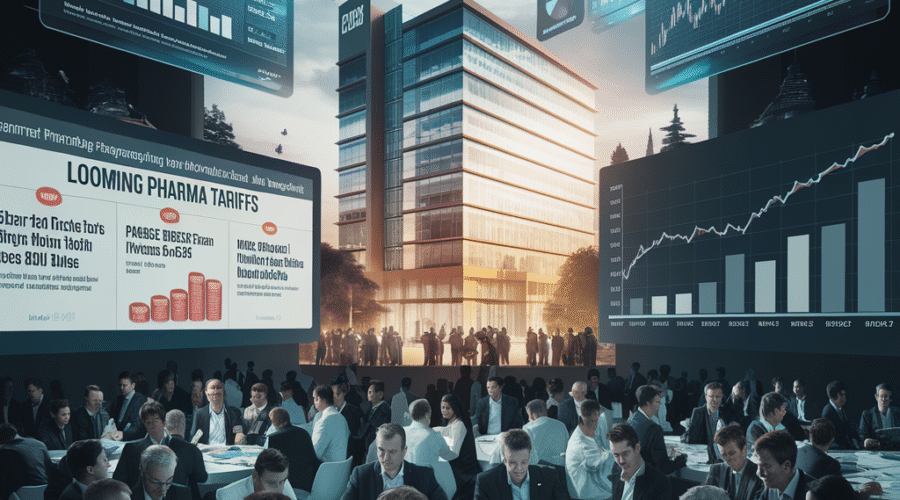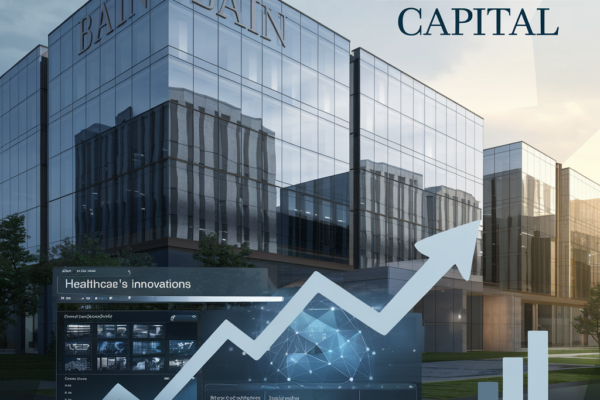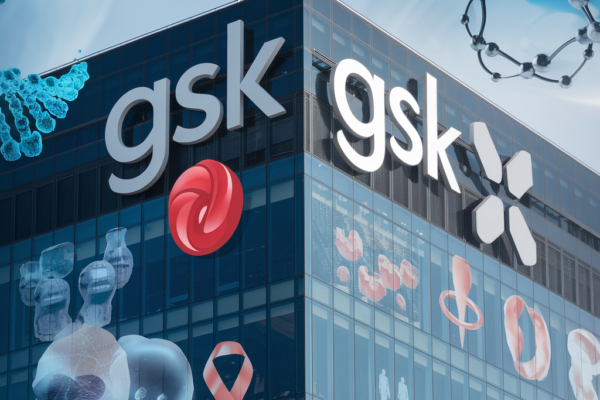The pharmaceutical and biotechnology sectors face unprecedented disruption as President Trump’s proposed 10-25% tariffs on imported drugs and medical devices threaten to upend global supply chains, delay clinical development, and freeze merger activity through mid-2025. With 40% of U.S. medical devices and 90% of generic drugs relying on foreign-sourced components, industry leaders are scrambling to reconfigure manufacturing networks while navigating heightened regulatory risks and geopolitical tensions. The resulting uncertainty has pushed biotech M&A valuations to five-year lows, with analysts predicting dealmaking won’t rebound until Q3 2025 as companies adopt “wait-and-see” strategies[1][3][4].
Tariff Architecture Creates Supply Chain Fault Lines
MedTech’s Precarious Position
The $110 billion U.S. medical device market faces existential threats from proposed 10% baseline tariffs and 145% reciprocal duties on Chinese imports. With 40% of devices imported – primarily from Mexico, Germany, and China – manufacturers confront impossible choices between absorbing $12-18 billion in projected cost increases or undertaking multi-year supplier transitions requiring FDA requalification[2][4]. J.P. Morgan analysis reveals that requalifying a single Class III device component can take 9-14 months, potentially delaying product launches by 18-24 months across the sector[2].
Generic Drug Time Bomb
Tariffs targeting Indian API producers threaten to destabilize the $92 billion generic drug market, where 90% of U.S. prescriptions rely on imports. The Indian Pharmaceutical Alliance warns that 25% tariffs could trigger 300+ new drug shortages within 12 months as manufacturers operating on 3-5% margins face existential pressure[4]. This comes as Chinese API exporters like Huahai Pharmaceutical accelerate plans for U.S. production facilities, though analysts note 5-7 year timelines for meaningful capacity shifts[7].
Innovation Engine Stutters Under Compliance Burden
Clinical Trial Gridlock
The Biotechnology Innovation Organization’s February 2025 survey reveals 89% of U.S. biotechs face clinical trial delays due to API sourcing challenges, with 72% reporting protocol amendments to accommodate alternative suppliers[3]. Compounding these issues, the NIH’s April 4th ban on Chinese researcher access to clinical databases has stalled 37 major trials for neurology and oncology therapies, according to industry insiders[7].
Regulatory Quagmire Deepens
FDA data shows a 22% increase in Complete Response Letters since Q4 2024, with 63% citing “supply chain inconsistencies” in manufacturing processes. This regulatory friction comes as companies juggle 15-20% longer lead times for critical bioreactor components and chromatography resins, forcing 41% of cell therapy developers to delay IND submissions according to BIO analysis[3][7].
M&A Markets Enter Deep Freeze
Valuation Reset Underway
Biotech M&A volume plummeted 38% year-over-year in Q1 2025 as acquirers discount targets by 25-40% for tariff-related supply chain risks. The collapse follows 2024’s record $46 billion in Chinese out-licensing deals, which now face scrutiny over FDA acceptance of China-only clinical data[6][7]. Summit Therapeutics’ $5.3 billion licensing deal with Akeso Bio, structured around Phase III data from Chinese trials, has become a litmus test for this emerging model[6].
Strategic Investors Pivot East
Atlas Venture and General Atlantic have redirected 60% of their 2025 biotech funding to Chinese startups offering “de-risked” Phase II assets at 30-50% discounts to U.S. peers. This capital flight comes as Chinese biotechs file 43% of global Phase III oncology trials, up from 28% in 2023[5][6]. However, the Biosecure Act’s looming restrictions on U.S.-China research collaborations have forced 72% of these deals into complex offshore holding company structures[5][7].
Industry Mounts Multi-Pronged Response
Supply Chain Regionalization Accelerates
MedTech leaders are implementing 3-5 year, $7-10 billion plans to reshore critical component production. 10XBeta’s Marcel Botha notes that 68% of device makers now use AI-driven “digital twins” to simulate supplier transitions, cutting requalification timelines by 40%[2]. Meanwhile, Catalent and Thermo Fisher have launched $1.2 billion in new fill-finish capacity targeting tariff-exempt markets like Costa Rica and Ireland[2][4].
Deal Structuring Innovation Emerges
To circumvent regulatory risks, 55% of recent cross-border deals utilize contingent value rights (CVRs) tying payments to post-tariff revenue thresholds. The model gained traction following Gilead’s $4.7 billion acquisition of a Chinese NASH drug developer, where 30% of the payout depends on maintaining pre-tariff gross margins through 2027[6][7].
Long-Term Strategic Implications
New Commercial Calculus for R&D
With 73% of biotechs now requiring “tariff impact assessments” before IND submission, pipeline prioritization has shifted decisively toward therapies with simpler manufacturing needs. Obesity and immunology drugs dominate development pipelines, as their oral formulations face fewer supply chain risks than complex biologics[6][7].
Geopolitical Realignment Accelerates
The FDA’s new “China-only” review pathway for 505(b)(2) applications – used by Summit Therapeutics – could formalize bifurcated development strategies. However, 68% of investors surveyed by HSBC Innovation Banking believe this approach will face Congressional pushback if Trump secures a second term[5][6].
Conclusion: Navigating the New Reality
As the industry braces for 18-24 months of turbulence, three imperatives emerge: First, companies must implement AI-driven supply chain monitoring systems capable of real-time tariff impact modeling. Second, M&A teams need to develop sophisticated risk-sharing mechanisms like CVRs to bridge valuation gaps. Finally, R&D organizations must accelerate adoption of decentralized manufacturing models using 3D printing and modular bioreactors to insulate pipelines from trade policy shocks. Those who successfully navigate this complex landscape will emerge as the architects of pharma’s next era – but the window for strategic repositioning is closing rapidly.
Sources
https://www.biospace.com/business/put-on-your-life-vest-pharma-tariffs-are-coming, https://www.techtarget.com/pharmalifesciences/feature/How-Trumps-tariffs-threaten-MedTech-supply-chains, https://www.fiercepharma.com/manufacturing/biotechs-fear-trump-20-tariffs-will-drive-manufacturing-costs-hurt-medicine-access, https://www.pharmamanufacturing.com/industry-news/news/55283099/trump-administration-launches-probe-of-pharmaceutical-imports-as-tariffs-loom, https://www.biopharmadive.com/news/biotech-us-china-competition-drug-deals/737543/, https://blog.lifesciencenation.com/2025/02/19/china-the-new-darling-for-deals-with-trump-tariffs-looming/, https://kr-asia.com/chinese-drugmakers-weigh-options-as-us-mulls-pharma-tariffs, https://www.pharmexec.com/view/twists-turns-biopharma-dealmaking-2024-trends





